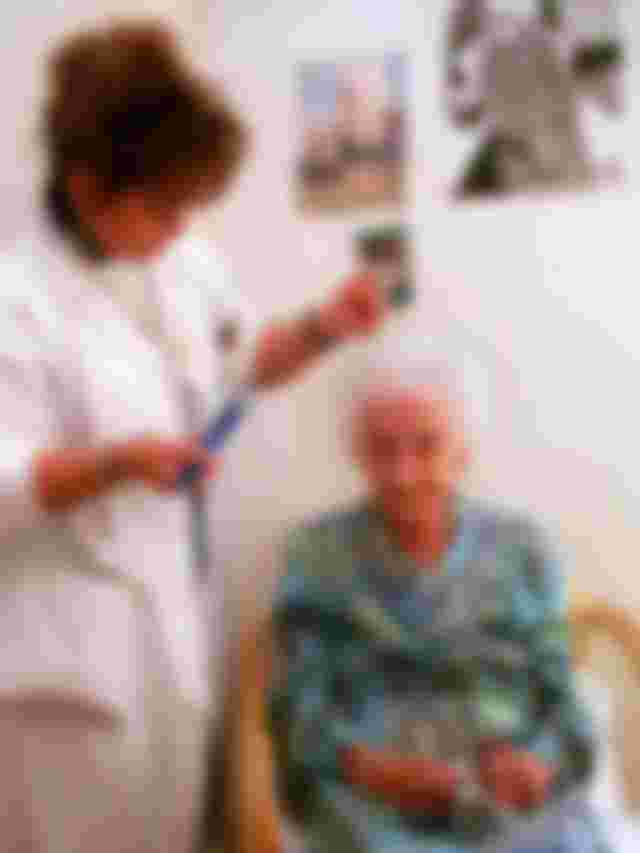Researchers are getting a better understanding of the ageing process and the ways it could be slowed, halted or even reversed

“The first person to live to be 1,000 years old is alive today.” I read that sentence two years ago and it set me off on a voyage of discovery. Since then I’ve been finding out what is known about longevity, the time that each of us is allotted to live our lives. I’m not going to live to be 1,000 but could my granddaughter?
We live in unprecedented times and the pace of change and innovation is explosive. Unlike any other era, mankind has the means to destroy the world completely and in so many ways. If mankind does not succumb to man-made or natural disasters and continues to progress exponentially, it becomes difficult to predict the next 100 years, let alone peer darkly into the distant future.
Mankind’s curiosity has taken us to the stage when we can start to answer some of the fundamental questions about ourselves, why we are here, and what are the mechanisms that got us to this point. I believe that we stand on the threshold where this understanding can be translated into the most extraordinary and wonderful changes in the human condition.
A few generations ago death was a familiar event. Death was capricious, visiting the young as well as the old, the hale as well as the infirm, the rich as well as the poor. It was an accepted and everyday occurrence over which man had little influence. No wonder that it was often seen as beyond man’s control.
I’m now retired but I spent many years looking after seriously ill patients as director of intensive care at the Royal London hospital. At a previous age, I might not have survived this long, let alone enjoy an active physical and mental existence. Over the last 150 years, improved nutrition, clean water, better sanitation, and the application of medical science have been remarkably successful in tackling disease and allowing most people to reach their potential lifespan. Because of these advances, millions of people are alive today who would have died not so many years ago.
In recent years the search for ways to achieve an extended lifespan has moved out of the realm of fantasy and science fiction to become a legitimate scientific pursuit. Death has moved from being inevitable to a technical hitch amenable to intervention and prevention.

For most of recorded human history, average life expectancy has been between 20 and 40 years. In Britain, it was only in the mid-1800s that this figure consistently rose above 40 years. Today in the UK average life expectancy is about 80 years. The main reason for this extraordinary advance is the fall in infant mortality. In 1800 one-third of British children died before their fifth birthday. Today that figure is less than one percent. The big killers used to be infectious diseases such as tuberculosis, scarlet fever, smallpox, influenza, typhoid, and cholera. If progress at reducing mortality continues then many children born since the year 2000 will live to celebrate their 100th birthday.
Psalm 90:10 in the Bible concedes a natural life span of three score years and 10, or four scores for the fortunate. Living to 70 or 80 years of age was not unusual in historical times. For example, Michelangelo died in 1564 three weeks before his 89th birthday. Worldwide there are thought to be about 400 people older than 110 years, and more than 90 percent of them are women. The oldest reliably documented person was a French woman called Jeanne Calment who died in 1997 at the age of 122. A healthy, non-smoking lifestyle involving exercise, good nutrition and rewarding social interactions will maximize the chances of achieving your potential lifespan. I can’t tell you how to live for hundreds of years, but at the moment nobody can.
Natural selection is the key mechanism in evolution. We can’t rely on this to extend life as there is little evolutionary pressure once we have had children and passed on our genes. If humans are to live longer than anyone has before then medical science will have to up its game.

Frenchwoman Jeanne Calment lived to see her 123rd year (AFP/Getty)
All living organisms use the same chemical building blocks and the same cellular organization. That is why it is said that we share 50 percent of our genetic material with a banana plant. If other creatures can live extraordinarily long lives, regenerate limbs or spend winters in hibernation, then why can’t we?
Ageing is common to almost all creatures but occurs at vastly different rates and in different ways. Interventions have already been demonstrated that substantially extend the lifespans of yeasts, worms, fruit flies and small mammals. Successful techniques include genetic manipulation, calorie restriction and therapy with drugs that slow ageing. Researchers are getting a better understanding of the ageing process and thus the ways in which it could be slowed, halted or even reversed.
Some off the wall solutions to extending lifespan have been described. These include freezing the dead to be reanimated in the future, head transplants and uploading to a computer. More mainstream approaches, all in their infancy, probably have a better chance of prolonging human life. These are the application of technology to replace and enhance human functions, regeneration and stem cell therapy, and genetic manipulation.

Humans share 50 per cent of our genetic material with a banana plant (Alamy)
Medical innovations have already saved the lives of millions of people. My working lifetime saw the introduction of CT and other imaging, non-invasive surgery, and endoscopy made possible by fibreoptics and cameras on microchips. In the UK more than 300,000 cataract replacements are performed each year inserting an artificial lens into the eye. The near future will probably see the wide application of smart health monitors, brain stimulators, replacement organs grown in the laboratory or in donor animals, artificial intelligence to diagnose and treat disease, and nanomedibots in the bloodstream programmed to search out and destroy harmful viruses and cancers.
A human foetus in the womb can regenerate a damaged fingertip. After birth, the capacity for repair and regrowth is rapidly lost. Across the animal kingdom, there is a huge range in the ability to regenerate tissues and organs with some adult animals retaining the ability to regrow limbs, heart muscle, brain and spinal cord.




Plagiarism:
https://www.independent.co.uk/news/long_reads/live-longer-longevity-stem-cells-ageing-a8332701.html